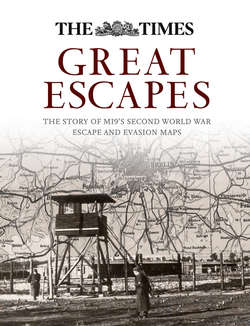Читать книгу Great Escapes: The story of MI9’s Second World War escape and evasion maps - Barbara Bond - Страница 8
NORMAN CROCKATT
ОглавлениеThe newly appointed Head of MI9 was Major, later promoted to Colonel and eventually to Brigadier, Norman Richard Crockatt (1894–1956), a retired infantry officer who had seen active service in World War I in the Royal Scots Guards. Crockatt had left the Army in 1927, worked in the City and was in his mid-forties at the outbreak of World War II.
Whilst he had been decorated in World War I (DSO, MC), he had never been captured and, therefore, had no experience of being a prisoner of war. He proved, however, to be an admirable choice to ensure the fledgling section made good progress in its infancy and throughout the war, being ‘clear-headed, quick witted, a good organizer, a good judge of men, and no respecter of red tape’ (as recorded by M. R. D. Foot and J. M Langley in their definitive history MI9: Escape and Evasion, 1939–1945, hereafter referred to as Foot and Langley). These qualities were to stand him in good stead for the work he tackled in the next six years. He also recognized the importance of keeping his section small, concentrated in its activities and low profile among other intelligence sections, attributes which appeared to ensure that when the time came to expand its activities, it received little opposition from those competing for military priorities and budgets. Crockatt realized the value of having the experience of former prisoners of war, especially those who had successfully escaped, and appointed many with that experience to the small cadre of lecturing staff based in the Training School established by MI9.
Brigadier Norman Crockatt in the MI9 headquarters at Wilton Park near Beaconsfield in 1944.
The initial budget given to Crockatt to set up the entire section was £2,000. In present day terms, this equates to a sum of approximately £90,000. He embarked on a recruitment campaign and, by the end of July 1940, the complement of officers in the whole of the MI9 organization had risen to fifty. By that time, Crockatt was looking to move his organization out of London and by September 1940, he had selected Wilton Park, near Beaconsfield, as an appropriate location. After necessary refurbishment and the installation of telephones, most of the MI9 staff moved there on 14–18 October and occupied No. 20 Camp at Wilton Park.
